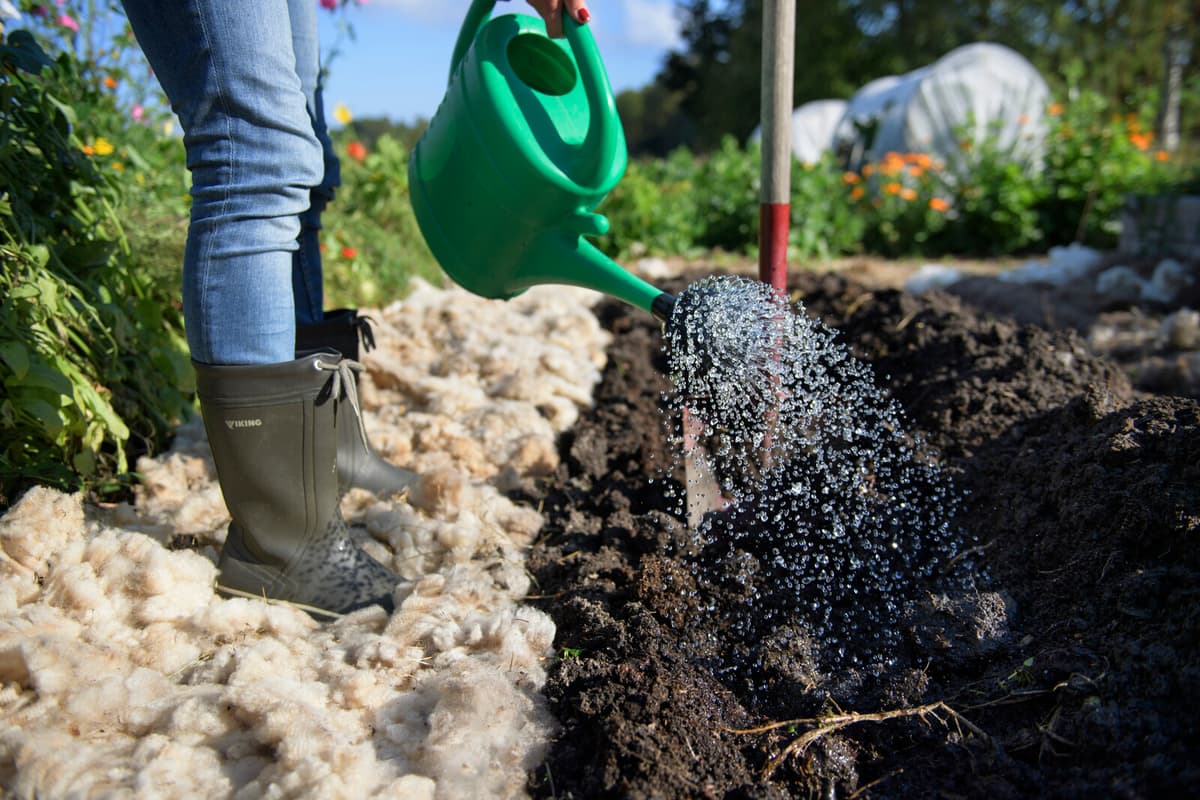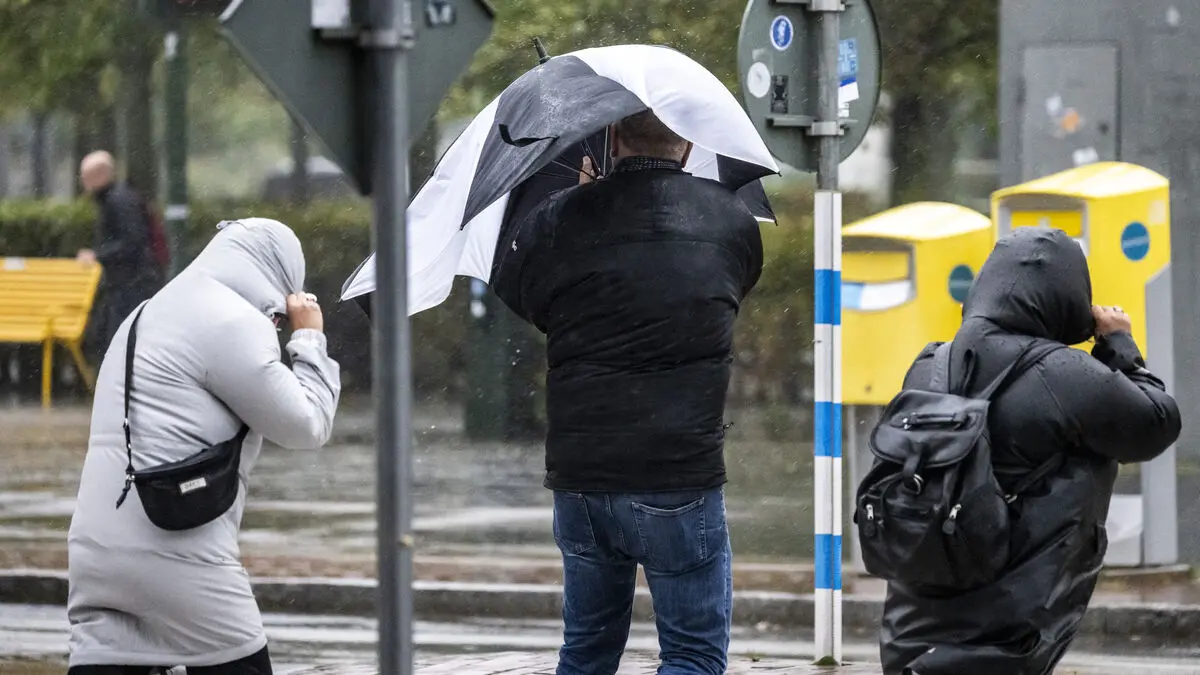Now it's getting exciting for all gardeners. What should be planted in the beds and garden land? Few think about what you might get for free.
There's a lot that can come with plants, and many of the free passengers are hardly visible to the naked eye. Henrik Lange, coordinator of invasive species, the Environmental Protection Agency, believes that how much actually slips through is extremely underreported and therefore it's hard to say how common it is.
The Environmental Directorate in Norway conducted a study in 2018 and looked at what came in with imported plants, and it was several hundred foreign species, just on one percent of the incoming plant material. It's small insects and it's fungi and all sorts of things. This is a real Pandora's box.
Often, the controls fall between the cracks, and you only react when the uninvited guests have already moved in. He takes the example of the flatworm Obama, which was discovered in Sweden last year.
Although we've had, since 2019, I think, a banned flatworm species throughout Europe that occurs in Ireland and Scotland, we haven't thought to check for it.
Strong Lobbying Power
Henrik Lange notes that not all EU countries are so keen on putting Obama on the risk list. There's politics in plant control.
The plant industry is a very strong lobbying power in many countries, and then their governments may be less inclined to introduce regulations.
We're working on it from the Environmental Protection Agency, and we're trying to get our sister agencies in other countries on board. But the enthusiasm varies greatly.
Within the EU, plants that are bought and sold must have a so-called plant passport.
If a company in Sweden wants to buy plants from, for example, Italy, those plants must have a plant passport. This means that the seller must check the plants to ensure that they don't contain pests that are not allowed to spread within the EU, explains Ingrid Areskoug, plant pest control officer, the Board of Agriculture.
For private individuals, it's more about being aware of the risks and taking responsibility. But awareness of what can come with plants, and what effects it can have, is low.
On the animal side, consumers are much more aware, almost everyone has an understanding of rabies and African swine fever. But we have exactly the same problem on the plant side.
Take a look when you're traveling, but don't smuggle anything back home. Just because you don't see anything doesn't mean there's nothing there.
Dead Elm Trees
An example of how hard an infection from outside can hit is Dutch elm disease – a fungus that originally came from Asia with devastating results for Sweden's elm trees.
We don't have any large, majestic elm trees in southern Sweden today. They're completely dead.
A free passenger that could cause even greater damage is the pine wood nematode, a small worm that's hardly visible to the naked eye. It comes from America, but has taken hold in Portugal and parts of Spain, where it has wiped out large parts of the pine forest.
It would have huge economic and social consequences. And environmentally, it would have catastrophic consequences.
Importing plants from outside the EU is strictly regulated, but infections can be present in places you don't think about. Fruits and vegetables are checked when they're brought into Sweden, but as food, not as seeds, explains Ingrid Areskoug. It's worth thinking about for the hobby gardener.
We have strict rules around everything, and the strictest are around things that are to be planted or sown. Therefore, you shouldn't take seeds from a tomato you bought in a grocery store and plant them. They're not controlled as seeds, but can have viruses that can spread.
You shouldn't take ginger you buy in a store and plant it in a pot either, because it can bring pests you don't know about. It's not controlled for planting, it's only controlled for eating.
She strongly advises against taking potatoes from the grocery store and planting them in the ground.
There are many rules around potatoes. When you buy seed potatoes in a store, there's a type of plant passport on them that certifies they're controlled. There are so many infections that can come with potatoes.
Widespread Famine
In the 1840s, potato blight came to Europe and wiped out the harvests, leading to widespread famine. Ireland was worst hit, where one million people died and as many left the country. Due to potato blight, potatoes are today one of the most sprayed crops in European food production.
There are already many plant diseases in Sweden and Europe. But they should preferably not become more. Therefore, there are a number of so-called quarantine pests listed, plant pests that have little or no spread in Sweden and the EU and which should be eradicated if they come here.
The Spanish slug, which is ravaging Swedish gardens, is a practical example of how it shouldn't be done. Since it was considered a garden species, it didn't belong with the authorities responsible for nature, and where they were responsible for garden species, it wasn't listed, explains Henrik Lange at the Environmental Protection Agency.
Yes, and then it went as it went. And that's what we don't want to repeat now. We may be taking it too hard, but better that than not, I say.
Ingrid Areskoug agrees.
If it had come now, maybe there would have been strict rules. But that's often the problem with what we work with. It's only when we see the mistakes that we wake up.
Today, they're working a lot on preventive work. It's partly import controls, but also continuously surveying Sweden for pests that are known to be a threat.
We're constantly checking, because it's so important in this work. Can you combat a pest when it arrives? It's so much cheaper than if you have to try to combat it when it has spread.
Follow EU plant protection regulations and don't bring plants and seeds with you when you've been outside the EU, unless they have a health certificate.
Buy and share plants from safe sources – ask how the grower has checked that the plants are free from pests.
Choose plant varieties that are resistant or tolerant (resistant) to plant pests.
Choose plant varieties that are adapted to the local conditions and can therefore better compete with the pests.
Source: The Board of Agriculture





